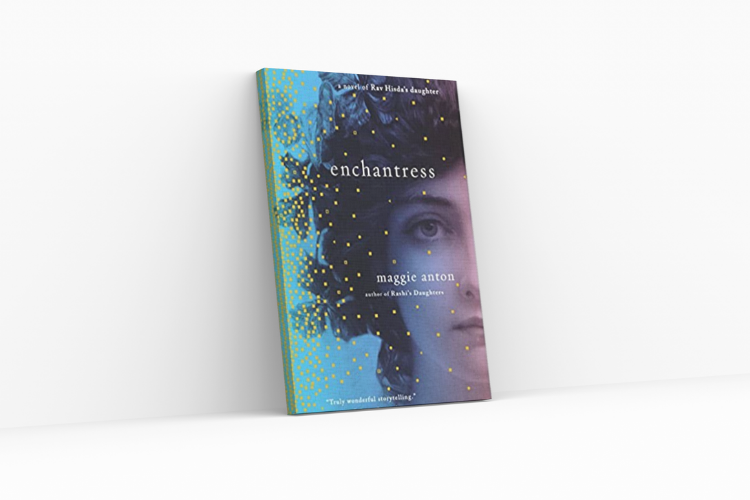
Jewish Women’s Surprisingly Prominent Role in Ancient Jewish Magic
(Wait, doesn’t the Torah say something about not allowing a sorceress to live?)
It does indeed. “You shall not tolerate (let live) a sorceress,” is the way the Jewish Publication Society translates Exodus 22:18. Or you may have seen the King James Version’s “Thou shalt not suffer a witch to live.” Even knowing these lines, the most astonishing thing I learned while researching ENCHANTRESS: A Novel of Rav Hisda’s Daughter was how prevalent—even ubiquitous—sorcery was among the same people who gave us Talmud and Midrash.
Early on, I came across information about Babylonian “magic bowls.” Unearthed under homes in what is now Iraq, the land where the Talmud was created, these were common items of household pottery inscribed with spells to protect the inhabitants from demons and the Evil Eye, believed to cause illness, unsuccessful pregnancy and other misfortune.
Undoubtedly of Jewish origin, the incantations are written with Hebrew letters, quote Torah, and call upon Jewish angels and divine names. Some quote Mishna and the rabbinic divorce formula. And that’s not all. Archaeologists have found, wherever our people lived during the first six centuries of the Common Era, Jewish amulets, curse tablets, and magic manuals.So how did our Sages deal with all this Jewish sorcery going on around them? As I delved into the Talmud, I came across magic in every tractate. Rabbis cast spells or wrote amulets themselves, and some fought demons in person. How did they get around Exodus 22:18?
The answer is that Babylonian rabbis were experts at interpreting Torah to have it mean what they wanted it to mean. Probably their most well known reinterpretation (in Bava Kama 83b) was to take Exodus 21:24’s “eye for eye, tooth for tooth” and make it into monetary damages, where the perpetrator pays the victim the value of an eye or a tooth.
It turns out the Rabbis reinterpreted Exodus 22:18 as well. First they maintained that what this verse teaches is that sorcery is the province of women, which why Torah uses the feminine “sorceress.” Then they further explained that the dictum not to allow a sorceress to live applied only to pagans, not to Jewish women whose magic was intended for healing and protection. Indeed, the Talmud declared that incantations and amulets could be used not only to cure the sick, but also to prevent illness – which meant everyone needed the magic practitioners’ services.
Finally, the rabbis pointed to the beginning of Chapter Six of Genesis, where it is written: “divine beings saw how beautiful the daughters of men were and took wives from among those that pleased them.” These heavenly beings who came down and married human women taught them spells that called upon Jewish angels, and these women taught their daughters, who taught theirs, and so on. This, according to the rabbis, is how women learned all their healing magic. Contrary to the common view that witches were in league with the devil, Jewish sorceresses were in league with the angels.
Many of these apatropaic incantations and rituals are detailed in the Talmud, and, interestingly, in no case is a sorceress punished or even criticized. In Tractate Shabbat, there is a lengthy passage about how to determine if amulet scribes are experts and if their spells are proven. Rabbis quoted and consulted these skilled professionals, (one of whom was Rav Hisda’s daughter, who knew the magic procedure to defend against demons in the privy). One rabbi even asked for advice on a complicated spell from the head sorceress.
The head sorceress? How did a woman get to be the head sorceress? Was there something like Hogwarts in Babylonia?
Apparently there was a hierarchy of sorceresses, and that meant some process to train new ones and evaluate their knowledge. But who were these women – women who were could write Aramaic in Hebrew characters (the same as the Talmud), who knew Torah and Mishna? The power their community believed they wielded over angels and demons would have made them esteemed and formidable healers, not wretched back-alley conjurers, which is how most modern people would imagine them.
Eventually I came to the conclusion that the Jewish enchantresses who inscribed those Babylonian magic bowls were, like Rav Hisda’s daughter, members of rabbinic families. After all, which other women back then would be sufficiently literate and learned? Which other women would be so familiar with the language of a Jewish divorce document, a rabbinic innovation, that they would utilize it in assisting their clients to ‘divorce’ a demon?
No wonder the Talmudic rabbis never criticized sorceresses, and no wonder they consulted them. These powerful women were their mothers, their daughters, their wives.
One comment on “Jewish Women’s Surprisingly Prominent Role in Ancient Jewish Magic”
Comments are closed.




Very interesting! It sounds like a different mindset than some other cultures, such as the English village in The Year of Wonder by Geraldine Brooks, where the healers, both women, are viewed as helpful in childbirth and illness, but also dangerous with their mysterious abilities. I look forward to reading the book!